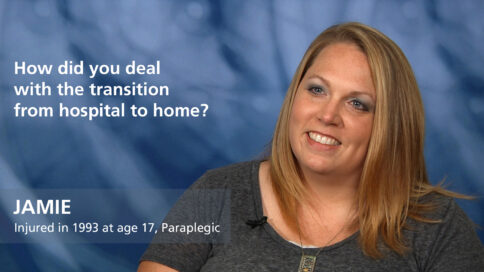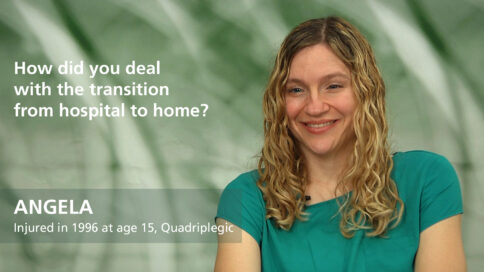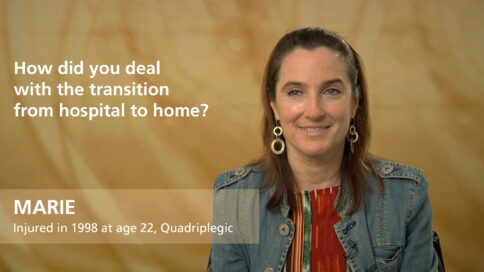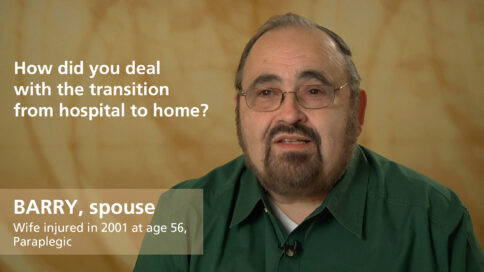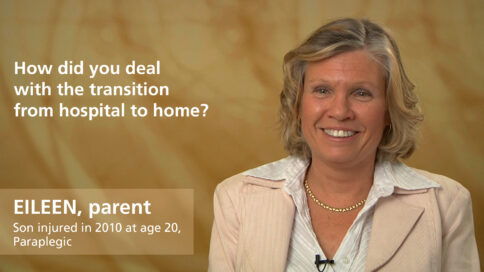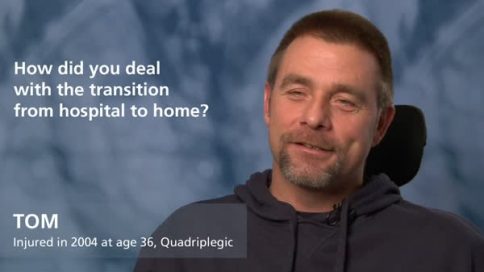How do occupational therapists help with eating after a spinal cord injury? - Katie Powell, OT
|
|
How do occupational therapists help with eating after a spinal cord injury? |
|
Katie Powell, OTOccupational Therapist, Clement J. Zablocki VA Medical Center, Milwaukee |
||
| Read Bio | More Videos by Katie Powell | |
|
Share |
||
Transcript
When someone has difficulty eating after a spinal cord injury, we really break down the tasks and look at each component of eating, and what equipment they need to support that. So it starts with being able to get the food off the plate. We’re looking at do they need something to help them hold the utensil? Do they need a utensil that’s easier to hold? Do they need something or somebody to support their arm while they’re scooping that food off of their plate? From there, once they have it in their hands, can they bring the food up to their mouth without spilling, dropping it all over themselves? Then we’re also looking at can they manage a beverage? Can they get the cup up to their mouth? Do they need a longer straw so the cup just stays on the table, on their chair and they move their head to get to it? We’re looking at the set-up of the table. Do they need somebody to cut their food up? Do they need a specialized knife? Does their plate need to be an adaptive plate that has a higher side so they can push the food into it to get it onto the fork or spoon. People always tell me, “I had no idea there was so much that goes into eating!” And before a spinal cord injury, it’s something we do without thinking. And afterwards as occupational therapist, we have to break down that task, look at the different steps and then take a look at what equipment could benefit the patient to do that.
Show Less|
|
||
add
How do occupational therapists help with eating after a spinal cord injury? |
||
Katie Powell, OTOccupational Therapist, Clement J. Zablocki VA Medical Center, Milwaukee |
More Videos by Katie Powell | |
| Transcriptadd | share | |
When someone has difficulty eating after a spinal cord injury, we really break down the tasks and look at each component of eating, and what equipment they need to support that. So it starts with being able to get the food off the plate. We’re looking at do they need something to help them hold the utensil? Do they need a utensil that’s easier to hold? Do they need something or somebody to support their arm while they’re scooping that food off of their plate? From there, once they have it in their hands, can they bring the food up to their mouth without spilling, dropping it all over themselves? Then we’re also looking at can they manage a beverage? Can they get the cup up to their mouth? Do they need a longer straw so the cup just stays on the table, on their chair and they move their head to get to it? We’re looking at the set-up of the table. Do they need somebody to cut their food up? Do they need a specialized knife? Does their plate need to be an adaptive plate that has a higher side so they can push the food into it to get it onto the fork or spoon. People always tell me, “I had no idea there was so much that goes into eating!” And before a spinal cord injury, it’s something we do without thinking. And afterwards as occupational therapist, we have to break down that task, look at the different steps and then take a look at what equipment could benefit the patient to do that.













